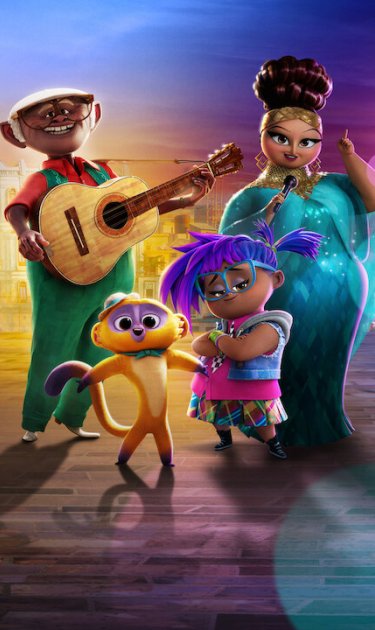It’s hard to ignore the Top 10 banner on your Netflix home screen. It sparks that innate curiosity of “Why are so many people watching this?” Joining that roster of intrigue this week is Vivo — Lin-Manuel Miranda’s newest animated film that hit no. 2 just days after its release on the streaming platform.
Vivo follows a singing and dancing kinkajou — yes, the tropical rainforest mammal. When we meet Vivo, he is one half of a Cuban pair that performs music and dances in the squares of Havana. His other half is his only human friend, Andrés (voiced by Juan de Marcos González). Andrés is an older man who is reminded of his younger days when his first love, Marta Sandavol (voiced by Gloria Estefan) —who left Cuba years ago and became a famous singer — invites him to her farewell concert. Andrés plans to take her up on her invitation, in which he would pour his heart out with a song he wrote for her so many years ago. Sadly, Andrés doesn’t get the opportunity to do so.
With his inability to deliver the message to Sandavol himself, Vivo now has a mission to bring the song to Marta and make Andrés’ wish come true. To do so, he reluctantly teams up with Andrés’ niece, Gabi (voiced by Ynairaly Simo), and before he knows it, he finds himself en route to Miami with a brief stop in Key West. Along the way, they cross the Everglades, and together the duo meets some cute, colorful, and some not-so-cuddly animal friends.
That is the skinny on Vivo. But this is what we absolutely adored about Vivo: It is normal. That is to say that while this movie is oozing with the Cuban culture with a great deal of its music, it’s just a regular movie. It does not focus on what it means to have Latin American roots or preach why certain characters act or speak a certain way. It just allows the characters to be. In addition, they aren’t up against a system or in a position where they have to prove themselves thanks to harmful stereotypes. The characters just exist as themselves. Being Latino, Latine, Hispanic, or however they identify isn’t a defining factor. Instead, it’s just a part of who they are.
It does not focus on what it means to have Latin American roots or preach why certain characters act or speak a certain way. It just allows the characters to be.
For kids, the message will be one in which they can see their own families and their own culture reflected at them without their background being the film’s sole subject. Kids will be able to hear, feel, and see the richness and the soul of their heritages reflected in Vivo. They’ll even be able to identify with Gabi’s mom, Rosa (voiced by Zoe Saldana), switching back and forth between English and Spanish.
All of this is part of the background of Vivo — rather than the foreground. And with that, they can focus on the lessons of the movie, which in this case are the standard teachings we’ve come to know in children’s films: to be yourself, be imaginative, be kind, be helpful, and stay away from slithering snakes in the Everglades. Ok, maybe not so much to that last one, but hey, there’s probably a message in there too.
On a final note, the music of Vivo is catchy. But that’s no surprise, given that Lin-Manuel Miranda wrote most of the songs — and as we know with In The Heights and Hamilton, his musical work is unshakeable. It also doesn’t hurt that the iconic Gloria Estefan lends her perfectly pitched pipes during her singing portions of the movie.
Ultimately, this movie thrives on its normalization of our experiences, communities, and heritage — and gives us good music while at it. And that’s what we need more of.




